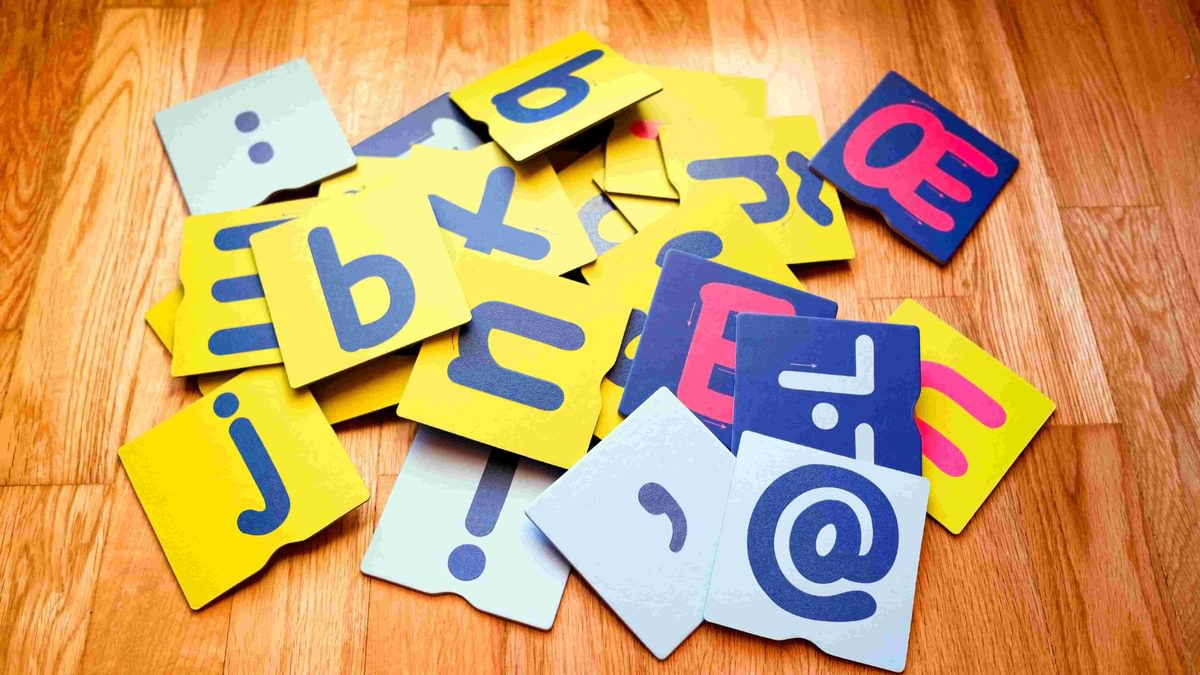The Intersection of Easy English and Digital Accessibility
Using complex language can exclude many people. Our Accessibility Consultant Simone Wisniewski recently caught up with Jodie from Access Easy English to learn about what Easy English is, the experience of low literacy, and how these insights relate to broader digital accessibility principles.


While many people working in office-based professional jobs take literacy for granted, it’s a very different story for many Australians.
- Nearly 20% of Aussies have a disability.
- 23% speak a language other than English at home.
- 44% have low literacy, meaning they have challenges with everyday tasks like reading a bus timetable, a recipe, or instructions on a packet of pills.
For these 44% of users, accessible text formats can make a difference to the digital accessibility of a product or service. Easy English – the most accessible format, with an average reading level of just grade one or two – can make your content work for many more readers.
I recently caught up with Jodie from Access Easy English to learn about what Easy English is, the experience of low literacy, and how these insights relate to broader digital accessibility principles.
What does an author need to know when making content accessible for users with low literacy?
If your content is worth writing, it’s because you want people to read it. With such a large proportion of Australians facing literacy challenges, there’s a very good chance your message would benefit from an accessible version of your written content.
Things to think about:
Who is the audience? What do they need to know? What do they need to do next? The message itself:
- Is it clear?
- Is there unnecessary fluff?
- Is there assumed knowledge? Does a reader with no prior knowledge have enough context to understand?
- Are there steps missing?
Language:
- Word choices: do you really need to “utilise assistance,” or could you just “use help”?
- Jargon: must “an appliance proceed to the incident,” or could “a fire truck go to the fire”?
- UAIYW: Unexplained Acronyms In Your Writing.
- Short sentences with one idea help readers grasp your meaning.
Design:
- Visual clutter can be distracting and off-putting.
- Are your images decorations, metaphors, or literal depictions to support the meaning of the text? None of those are necessarily bad things, but it pays to be aware of the image’s job on the page.
- Text size, case, & font choice can all affect readability.
- Colour contrast, in both text and visual design.
These suggestions also provide great benefits for neurodiverse experiences of digital products and services by simplifying content presented to users. This makes information easier for everyone to comprehend, no matter their permanent, temporary, or situational circumstance.

How do digital skills impact users with low literacy?
While some people with low literacy also have low digital literacy, they can also be two separate groups.
Some issues which affect digital literacy specifically include:
- Age (unused to newer technology).
- Disability (low vision, poor motor control for mouse/touchscreen).
- Poverty:
- No device/internet access.
- No money to top up data.
- Old device that cannot use the latest tools, e.g., no camera for Zoom, can’t run heavy apps.
- Reliant on public access internet e.g., at the library, limited time and may not be able to download/print/install programs.
- Infrastructure – no internet coverage in their community.
Some people with low literacy, especially younger people, can be confident with technology but perhaps only for certain uses. You can be a TikTok star but still struggle with the Centrelink website.
Not everyone can recognize an online scam, tell an ad or a sponsored post from native digital content, tell a news story from an opinion piece, or identify a fake profile. Worryingly, there is a proportion of people who are confident they can, but cannot when asked to demonstrate their skills.
What are some common strategies people with low literacy use when exploring websites that a digital author should be aware of?
People with low literacy tend not to skim read or scan for relevant information. Rather they tend to start at the top of the page and read word-for-word. This can lead to wasted time if the website has a complex navigation structure in the header of the page: a highly literate user would likely skip over it entirely or scan for the option they need, whereas a less literate user would slog through every option, burning out their precious cognitive energy before they even get to the relevant message.
Depending on their age and their familiarity with technology, they may or may not:
- Realize there is more content if they scroll down.
- Recognize a link, especially if it’s presented in an inaccessible way.
- Know the difference between a URL and an email address.
- Understand or recognize symbols like @, #.
- Be able to switch between tabs if a link opens in a new tab.
- Download a file or find and open it when it is downloaded.
- Recognize when they are leaving one website for another.
- Be able to use a login code delivered by SMS or email, for two-factor authentication or to reset their password.
These experiences are consistent with issues someone using a screen reader may encounter if a digital experience has not been built for accessibility by assistive technologies. Screen reader users may or may not:
- Recognize if more content exists on a page if bypass blocks are not included in the design.
- Recognize components, such as links and buttons, if incorrect semantic roles have been applied to elements.
- Perceive meaningful non-text content if there are no text alternatives.
- Recognize when navigating to a new page due to missing an HTML title element or incorrect focus management behavior.
If the website has an “accessibility” option or button:
- Is it towards the top where a user with low literacy will find it quickly?
Or is it buried in the site footer? - Would they recognize it and know what it does?
Or is it an odd symbol with no universally recognized meaning? - Does this button present accessibility options like font size, contrast, or text-to-speech?
Or does it lead to the organization’s diversity and inclusion plan? Which is a worthwhile thing to have, but not what the reader needs right now.
These design considerations are also important for building website features that help users troubleshoot inaccessible aspects of a website. For example, support information, such as contact details to request assistance, is a feature people may need if there are accessibility issues preventing them from completing a flow, such as purchasing a product. Features like this need to be easy for users to identify, find, and interact with. The more effort required by the user to find and use these features, the more likely they are to find the experience unusable and quit.
And the usual Easy English principles apply, including navigation, page names, and link identification. Common traps that will confuse the user include:
- Inconsistent link names, e.g., the start page is called “Sign up” in some places but “Get started” in others.
- Misleading link names, e.g., the link says “How we help you” but goes to the About page with the organization’s history and mission statement.
- Jokey terms, like listing a staff member’s role as “executive director of pizza and donuts.”
This advice is consistent with the guidance provided by the Web Content Accessibility Guideline (WCAG) success criterion 2.4.4 ‘Link Purpose (In Context) (Level A)’. This success criterion suggests the purpose of links must be determined by the link text alone, or with programmatically determined link context. By doing this, users can understand the purpose of links before activating them and can distinguish links from one another. This improves the experience for all users, and specifically people with cognitive related disabilities, vision related disabilities, or people navigating digital content with keyboard.
How do images aid the experience of a user with low literacy?
Literal images that reflect the text and support the meaning help readers with low literacy understand, remember and act on what they’ve read.
Access Easy English’s (AEE’s) user testing and research has found the most effective images are
- Clear and uncluttered, just showing what is relevant with no extra detail like busy backgrounds.
- Relevant to the reader – eg if you’re in Queensland you’re unlikely to relate to an image of snow-covered mountains.
- Not “cartoony” or childish
- Realistic line-drawings, such as those with simple block colours; enough detail to look ‘real’, not stick figures or stylised silhouettes as commonly used on toilet doors.
Or
- Photos when you’re illustrating a specific thing that needs to be recognisable – eg a view of the premises from the footpath to help the reader find their way when they visit, or instructions for how to operate a specific device.
Using imagery to convey digital information also provides great benefits for users who may have cognitive related disabilities that impact the ability to comprehend written content. For example, many people with dyslexia find information conveyed through images or audio to be more accessible than text content written in a ‘simple English’ format.
What are some solutions businesses should consider if they have users with low literacy and low digital skills?
Everything that you ask people to do online needs an accessible offline back-up. That may include:
- A phone number as well as an option to email/text.
- Booking an appointment by phone/in person as well as via an app.
- Forms available as hard copies that can be filled out and returned by mail or in person.
- Resources like fact sheets, handouts, terms and conditions and safety information available in hard copy as well as online.
This can be a funding challenge, for instance many organisations have drastically cut printing budgets and rely on clients to access forms and information online instead, or are no longer staffed to provide phone support.

Conclusion
- There are so many reasons a person might have low literacy, you won’t always be able to tell and ultimately it doesn’t matter – they need the same support regardless of the reason.
- Unless you’re a literacy support service, it is not on you to teach clients to read or expect them to improve their literacy to use your service/product/business. Meet them where they are.
- Most people won’t tell you they’re having trouble reading, there is still massive stigma around low literacy.
- No matter how well educated, healthy and accomplished we are, we are all potentially one tap from a drunk driver or bump on the head at footy training from joining the 44% of Australians who have low literacy.
About the Authors
Access Easy English offers clients training and services to improve content for users with low literacy and or low digital literacy. If you would like to learn more about implementing Easy English into your product or service, visit Access Easy English
The Testing Consultancy (TTC Global) Digital Accessibility Practice works with clients to create more accessible and inclusive digital experiences for all users. Contact us via our contact form for more information.
Connect with the Blog Authors
Simone Wisniewski, TTC Global Digital Accessibility Practice - Simone's Linkedin Profile
Jodie van de Wetering, Access Easy English - Jodie's LinkedIn Profile